The biosphere is zone of the Earth having life. It is a thin layer around the planet where all living organisms exist. It is the global ecological system integrating all living beings and their relationships with the atmosphere, hydrosphere, and lithosphere.
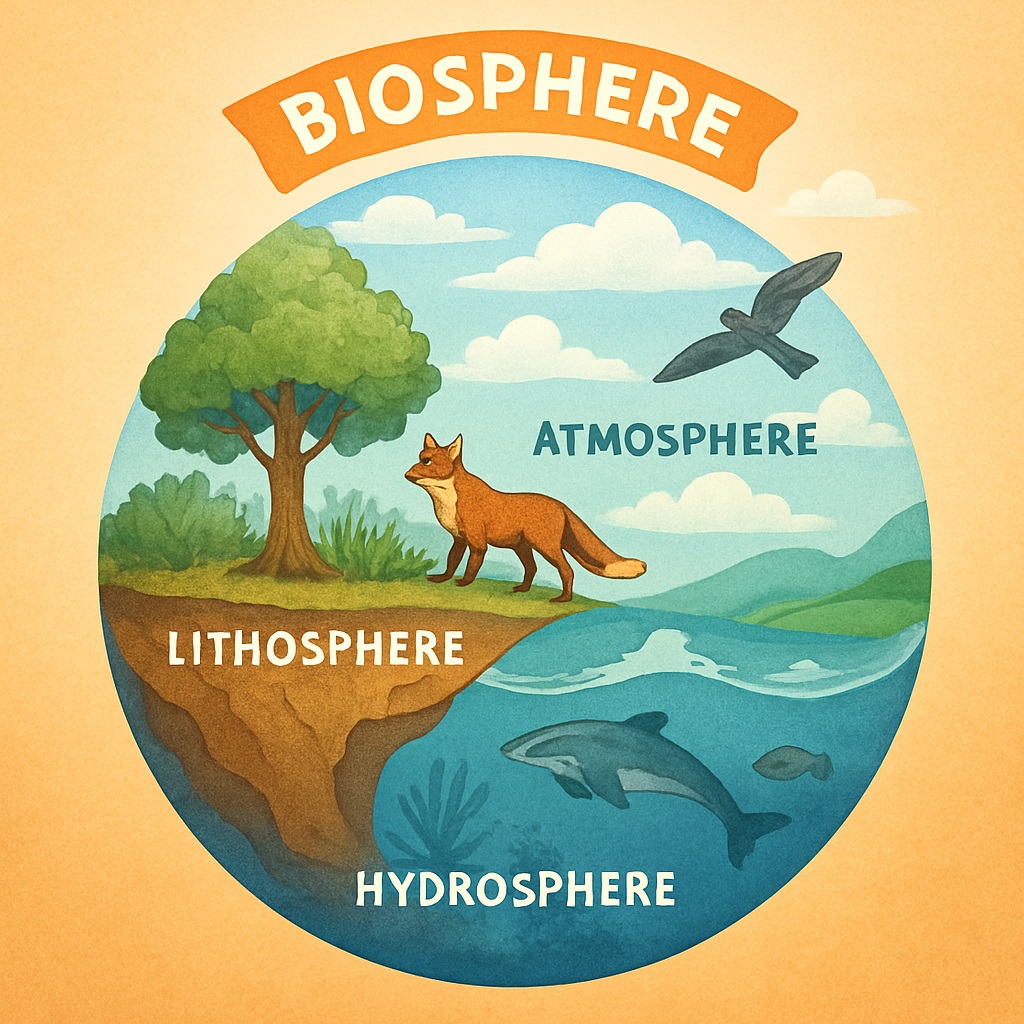
Table of Contents
What Is the Biosphere?
The term biosphere was coined by Austrian geologist Eduard Suess in 1875. It refers to the sum of all ecosystems where life exists, from the deep ocean trenches to the upper limits of the atmosphere where microbial life has been detected.
Components of the Biosphere
The biosphere includes three key sub-components:
Lithosphere
-
Solid outer part of Earth.
-
Supports terrestrial life (plants, animals, soil organisms).
-
Includes forests, deserts, grasslands, and mountains.
Hydrosphere
-
All water bodies: oceans, rivers, lakes, glaciers, and groundwater.
-
Supports aquatic life such as fish, corals, and algae.
Atmosphere
-
The gaseous envelope around Earth.
-
Supplies oxygen, carbon dioxide, and nitrogen needed for life.
What is Environment?
The environment refers to the surroundings or conditions in which a person, plant, animal, or any other organism lives and operates. It includes everything around us—both natural and human-made.
The environment is made up of:
- Abiotic (non-living) parts: land, water, and air
- Biotic (living) parts: plants, animals, and other organisms
These two sets—non-living and living—don’t exist in isolation. They constantly interact.
For example:
- Water and air shape the climate and weather patterns.
- Plants affect the soil and animals shape their surroundings too.
- Humans farm, build, and change rivers—all of which impacts the environment.
This constant exchange between living and non-living components is what shapes life on Earth and the different ways people live (like farming in fertile areas or fishing near coasts).
Energy and Matter Flow in the Biosphere
Energy Flow
Sun is the primary source. Plants convert solar energy to chemical energy via photosynthesis. The energy flows one way, i.e. from producers through herbivores to carnivores, it cannot be transferred in the reverse direction.
The amount of energy flow decreases with successive trophic levels. Producers capture only a small fraction of solar energy (1-5 per cent of total solar radiation), and the bulk of unutilized energy is dissipated mostly as heat. The huge loss of energy at the subsequent trophic level limits the length of food chain.
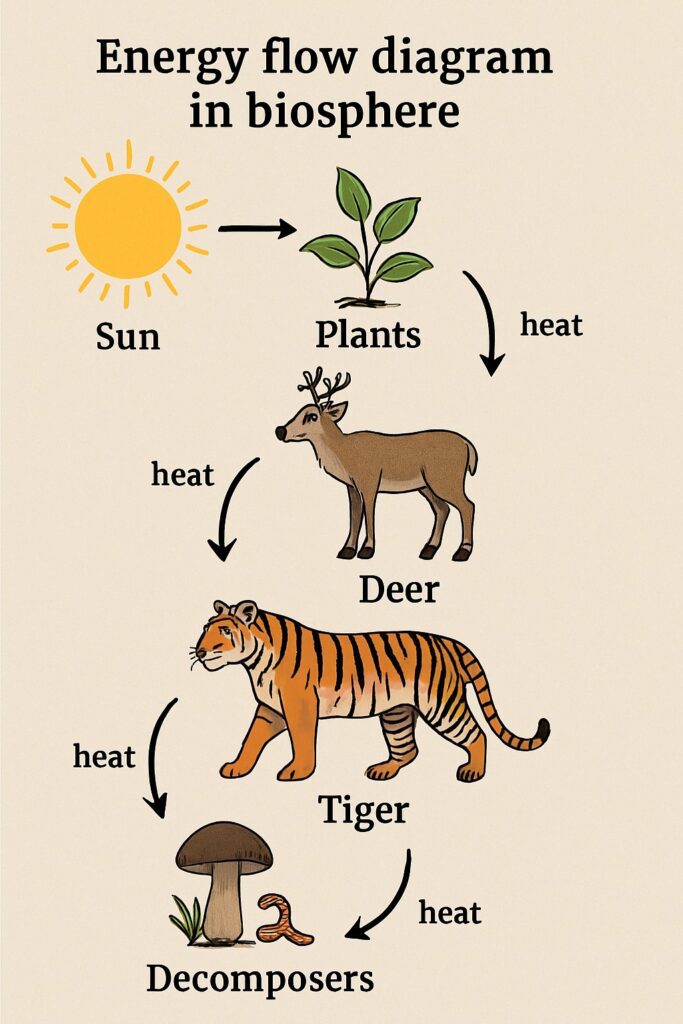
Nutrient Cycling
Elements like carbon, nitrogen, and water are constantly recycled between living and non-living components.
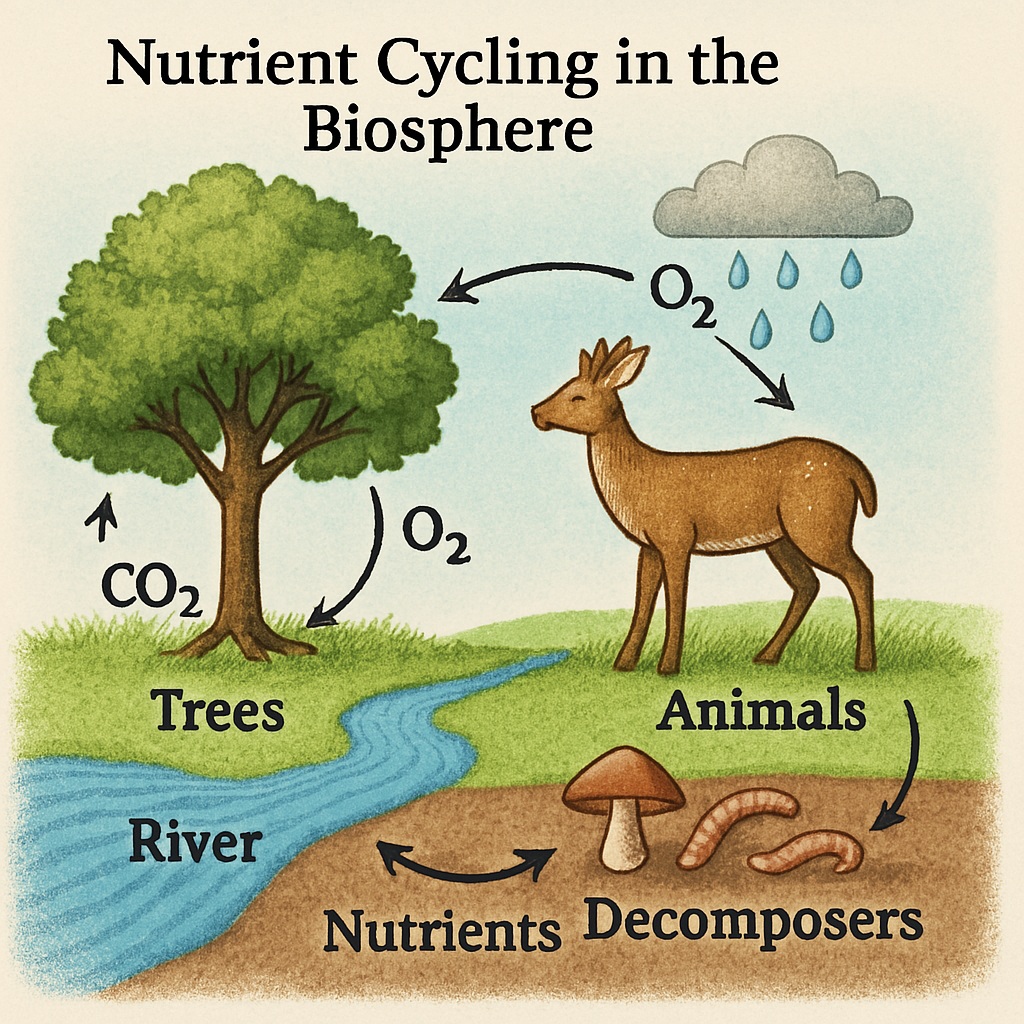
Life Forms in the Biosphere
Organisms in the biosphere range from microscopic bacteria to giant mammals, trees, fungi, and humans.
They can be broadly categorized as:
-
Producers (e.g., plants – perform photosynthesis)
-
Consumers (e.g., animals – depend on others for food)
-
Decomposers (e.g., fungi, bacteria – break down dead material)
These organisms interact in ecosystems, creating food chains and food webs.
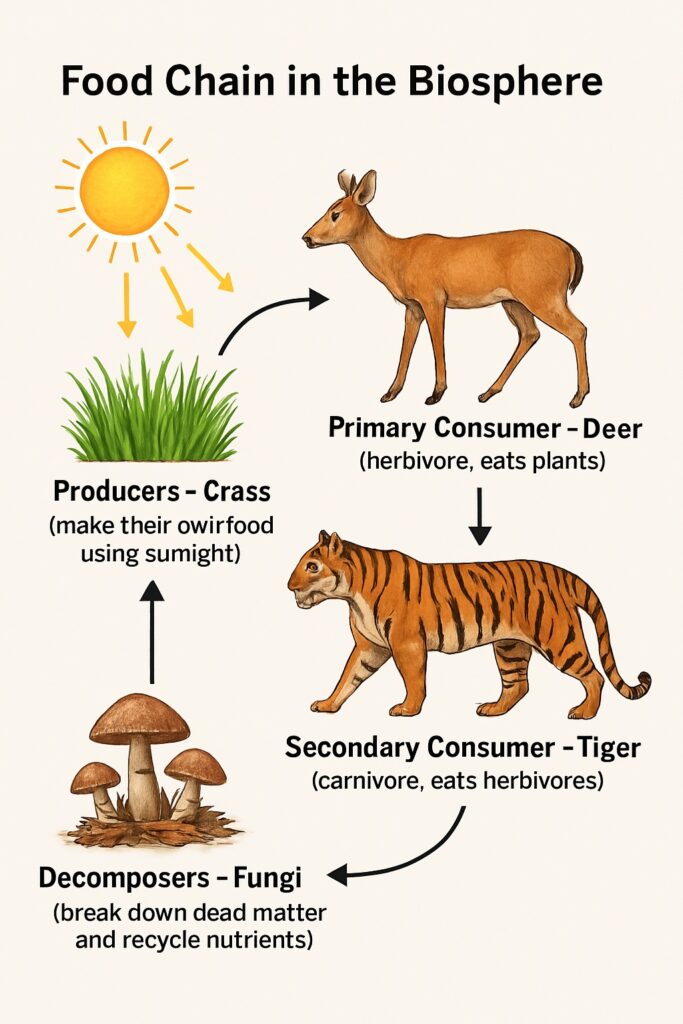
Producers (Autotrophs)
Producers are organisms that make their own food using sunlight, water, and carbon dioxide. This process is known as photosynthesis. They form the base of all food chains, supplying energy to all other organisms.
Examples:
-
Green plants
-
Algae
-
Phytoplankton
Key Functions:
-
Capture solar energy and convert it to chemical energy.
-
Produce oxygen as a by-product.
- Serve as food source for herbivores.
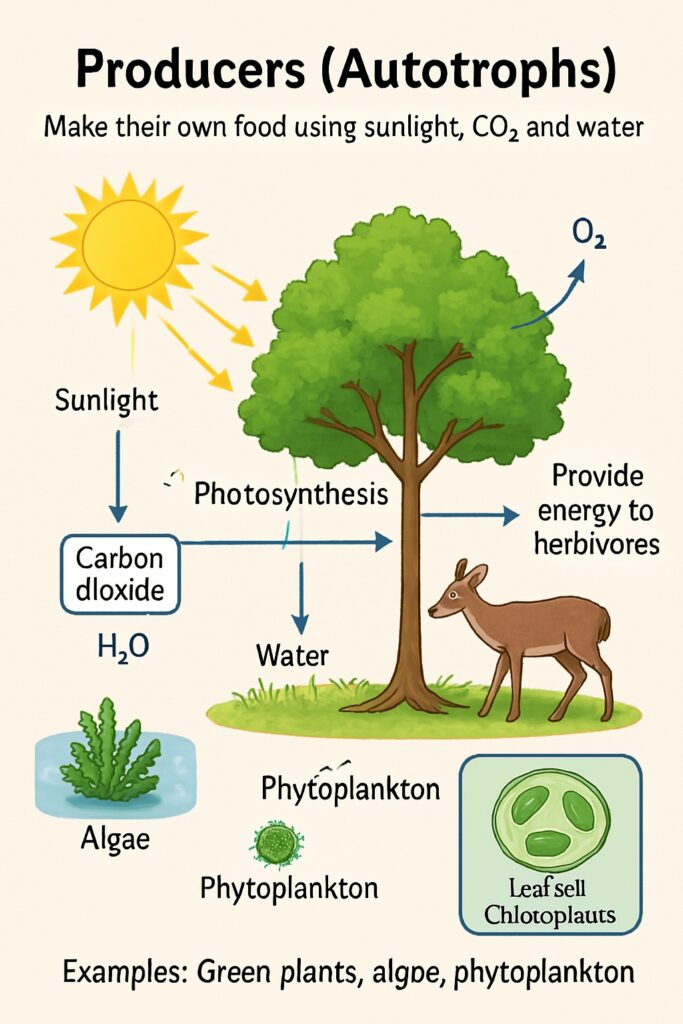
Consumers (Heterotrophs)
Consumers cannot produce their own food. They rely on other organisms (plants or animals) for energy. They are grouped based on what they eat.
Types of Consumers:
-
Herbivores – eat only plants (e.g., deer, rabbits)
-
Carnivores – eat only other animals (e.g., lions, eagles)
-
Omnivores – eat both plants and animals (e.g., humans, bears)
-
Scavengers – feed on dead animals (e.g., vultures, hyenas)
Key Functions:
-
Transfer energy from producers to higher trophic levels.
-
Help maintain population balance in ecosystems.
Decomposers (Saprotrophs)
Decomposers break down dead plants, animals, and waste, returning essential nutrients to the soil and completing the cycle of matter in the ecosystem. They play a critical role in keeping the biosphere clean and nutrient-rich.
Examples:
-
Bacteria
-
Fungi (like mushrooms)
-
Some insects (like earthworms)
Key Functions:
-
Recycle nutrients back to the soil
-
Enable plants to absorb nutrients
-
Prevent accumulation of dead matter:
What Is an Ecosystem?
An ecosystem is a system where living organisms interact with each other and with their non-living surroundings. It’s how life is sustained naturally.
Each ecosystem includes:
- Abiotic components (land, water, air, sunlight).
- Biotic communities (plants, animals, microorganisms).
Examples:
- A farm where crops grow and livestock graze.
- A forest with trees, animals, birds, and fungi.
- A pond full of fish, frogs, plants, and insects.
Each ecosystem has at least one full food chain, though many ecosystems host multiple chains due to diversity.
What Is an Ecological Pyramid?
To show how energy and population decrease as we move up, ecologists use ecological pyramids:
- Energy pyramid – base shows most energy (plants); top shows least (tertiary consumers).
- Number pyramid – base has many producers; top has fewer large carnivores.
Both take a triangle shape with a wide base and narrow top.
What Is Ecological Balance?
An ecological balance exists when the energy produced and consumed in an ecosystem is in perfect equilibrium. This means:
- Producers (like plants) make just enough food.
- Consumers (herbivores, carnivores, decomposers) eat just enough of it.
- No waste, no shortage—just a natural, steady rhythm.
This balance keeps ecosystems stable and sustainable.
Read: Geography Notes